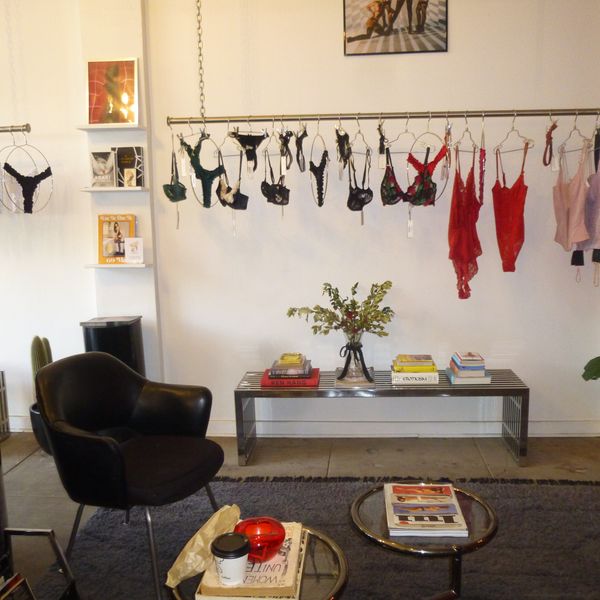
Sitting at Ixi'im restaurant at Chablé Yucatán, it's a record-breaking scorcher in Chochola, Yucatán. Chef Luis Ronzon serves house-made dippin' dots flavored with local squash and Zacate lemongrass ice cream.
Ronzon, who also has cochinita pibil–a typical regional slow-roasted pork dish marinated in acidic citrus–cooking in the ground some 500 meters away, repeats a Mexican saying: you can’t eat pinole (a kind of ground maize) and whistle. Meaning, you can’t do two things at the same time, and yet…

Courtesy of Chablé
Like many chefs in the region, Ronzon’s culinary approach blends tradition with innovation. Rather than disregarding millenary ways, he opts for an authenticity that also reflects his own ethos. "Our goal is to not only raise awareness about the rich cultural and culinary heritage we have but also to strike a balance between preserving Yucatecan traditions and embracing the demands of a modern culinary scene," he explains. And so, it turns out that dippin’ dots and traditional Yucatecan pork dishes have way more in common in Meridá than one would think.
Ronzon, who also worked in Noma and Quintonil (which just received two Michelin stars), not only cooked cochinita pibil with Eva Longoria on her show Searching for Mexico, but he is always fearlessly exploring innovative culinary territories. One of his greater passions shines through in his desserts. He loves working with cacao and crafts ice cream with the previously mentioned pinole served with a chocolate tamal. He creates locally-inspired dippin’ dots with butter ice cream drizzled with local melipona honey. And just a spoonful of each makes it easy to understand why chefs come here to eat. And they’ve been coming for a while—one of the most famous being René Redzepi of Noma.

René Redzepti, Hokol Vuh 2024
Courtesy of Nuno Lopes
In 2019, Redzepi released a book, Hungry: Eating, Road-Tripping, and Risking It All with the Greatest Chef in the World, written by food critic Jeff Gordinier. It transports the reader through a culinary decade with vivid descriptions of the Yucatán peninsula and its cuisine, while highlighting Redzepi's deep affection for it. This attachment resulted in a seven-week Noma pop-up in the jungle of Tulum in 2017.
A Cultural Hub With a Struggling Culinary Legacy
Back then, it was hard to imagine that today, traditional Yucatecan dishes would be on par with the haute cuisine from esteemed establishments such as Noma, Per Se, and Quintonil. Despite being twice named the American capital of culture, Mérida, Mexico, has never quite achieved the culinary renown of cities like Mexico City and Oaxaca. And yet, Meridá’s acclaimed Micaela Mar & Leña was voted Mexico's best restaurant this year.
"No one came to eat in Mérida some five years ago," explains Gina Góngora, a proud Yucatecan and the founder of Vagantes. A native of Mérida, Góngora (whose family name is rooted in the nearby village of Izamal) reminisces about enjoying cochinita pibil at Lupita at Mercado de Santiago and indulging in homemade pork dishes throughout the weekends, from poc chuc to pochero and frijol con puerco.
"I feel Yucatecan food has never been adequately appreciated, but now it is gaining momentum with a blend of tradition and contemporary flair."

Courtesy of Nuno Lopes
The deliberate and methodical exploration of Mérida's offerings owes much to its cultural and geographical context, which tends to err on the side of caution. Shaped by its history—from the ancient Mayan civilization to the Spanish conquest and the present-day digital nomad revolution—all under the Caribbean sun–the Yucatán has maintained a reserved demeanor. However, this is the environment that has provided young talent the space, capacity, and opportunity to converge, learn, and flourish.
In many ways, it has served as a creative incubator, birthing numerous projects, including Miel Nativa, an honest honey brand specializing in stingless honey bees native to the region. “Rodrigo [Navarro] and I began exploring the possibility of professionalizing the value chain for Melipona honey and connecting end consumers with the productive ecosystem. We aimed to create responsible value chains that manage natural resources effectively and ensure fair profit distribution,” says co-founder Andrea Figueroa Bustamante under a mango tree in the small village of Tixpéhual. Self-taught, Navarro both saves and cultivates bee hives, all of which are made up of stingless bees.

Melipona Bee Hives

Courtesy of Santiago Baravalle
But Miel Nativa’s overall discourse accurately reflects the conscious approach to such rapid change across the region. “It’s very important to start with learning for decision-making. The second pillar is to contribute because we believe that we can all contribute with our decisions to create a fairer and more sustainable planet. And the third pillar is to honor because when we learn and transform that information into actions, we are honoring everyone involved in the value chains.”
A Flourishing Agricultural Cornucopia

Courtesy of Pancho Maíz
One of the many impressive aspects of Yucatán gastronomy is the widespread availability of organic crops and the use of traditional agriculture. The village of Oxcutzcab is considered the garden of the region, focused mainly on a very traditional style of growing tropical fruits such as citrus, sapote, avocado, mango, papaya, mamey, huaya, saramuyo, and plums. But new endeavors, such as Mestiza de Indias, located in a town called Espita, are also coming around.

Courtesy of Nuno Lopes
“We wanted to demonstrate that agroecological agriculture in Yucatán is possible. We grow local varieties of fruits and vegetables and promote the rescue of endangered varieties in collaboration with farmers in our community. We are a boutique farm that seeks alliances with gastronomic proposals that value the importance of ethics, traceability, and the conservation of biodiversity,” explains founder Gonzalo Samaranch Granados. Espita is now also home to another notable project, Casona restaurant at Los Cedros Hotel, where Chef Jorge Ildefonso uses regional ingredients to craft unique flavor profiles and lighter textures than what is expected in Yucatecan cuisine.

Xóchitl Valdés
Courtesy of Pancho Maíz
Meridá isn't solely focused on modernizing traditions; in its majority, it seeks to showcase regional crops. One of the city's most cherished dining spots is Pancho Maíz, a corn producer itself, renowned for its delicious all-day breakfast. "We source our corn exclusively from various locations on the peninsula. Using local corn was a tradition that had been overlooked for a long time," explains Xóchitl Valdés, the Mexico City-born chef and owner. Housed in an uncovered colonial corner house, Pancho Maíz tastefully highlights its architectural details in an eclectic and contemporary style. Like many of Gongora's Vangantes homes, the restaurant's design reflects a rediscovery and celebration of these glorious spaces that deserve more love and attention, much like the cuisine.
At Ramiro, named after a Mexican golden-age actor who happens to be the owner's grandfather, head chef Aleli Vicencio presents a vegetarian (largely vegan) menu inspired by Mexican flavors that emphasize seasonal ingredients sourced from the local market. She draws inspiration from traditional Yucatecan cantinas, where guests enjoy drinks accompanied by simple yet delicious botanas. Ramiro follows this pattern, offering inventive Mexican bites in an open kitchen setting, along with a secret tasting menu for a contemporary culinary experience.

Courtesy of Ramiro
“I say, well, it's both good and bad, maybe not bad, but there's an evolution. You see, there's color, you see there's a bit of gold,” says Roberto Solís (winner of the 2023 Best Chef Awards). For over two decades now, he has been promoting the new Yucatecan cuisine while working on novel proposals. Jayu, his latest Japanese Yucatecan wine bar and omakase speakeasy, is set to open as an exclusive experience where Mexican ingredients serve as a basis for Japanese technique.
Other places like the cult-favorite Merci–where a Yucatecan-American chef builds upon her French training with her partner to showcase French, American and Mexican dishes–is an all-around delicious and feel-good experience. Regina Escalante says that for her, it is a compromiso personal, and in many ways, that’s ultimately the driving point for many culinary creatives in Yucatán. These are personal projects that are given space, time, and a historical foundation to serve their projects on a contemporary scene.
Acclaimed Chefs Flock to Mérida

Hokol Vuh
Courtesy of Serch Arafat
While Mérida recently played host to Latin America's 50 Best Restaurants in 2022 and The Best Chef Awards Yucatan in 2023, its own annual local initiative, the Hokol Vuh festival, is an even more passionate and nuanced endeavor. Founded by Roberto Solís and René Redzepi, this festival invites renowned chefs from around the world to immerse themselves in Yucatecan culture for a week-long intensive. The program includes visits to nearby villages and communities to learn from their ancient traditions and practices. The culmination of the week is a dinner at the Aké archaeological site, where chefs collaborate to create dishes inspired by their experiences with ingredients from the region. This year, three-star Michelin chefs Dominique Crenn and Julien Royer were added to the lineup, accompanied by two-star Michelin chefs, Ricard Camarena and Nick Bril, along with a diverse array of award-winning chefs.
The event also fosters enduring relationships between the region's producers and chefs from around the globe. “It's a matter of coexistence among us, of putting aside egos, of interacting with people, from being in the company of another person, and then pairing them up to achieve understanding with someone who has never worked with them before, who may have different perspectives, in other words, how to initiate a dialogue and as human beings, achieve something in common,” explains Solís, who has also just celebrated the 20th anniversary of his restaurant Nectar, which was virtually the first elevated dining restaurant in Mérida.
With just a few years of awards and international recognition, it’s hard to boil down Yucatán's dynamically growing gastronomy scene. But it’s places like Nectar that showcase the enduring nature of this vibrant culinary scene that is only just gaining momentum. And with that, it’s sure to expand down south into Quintana Roo and Tulum, where newcomers like Negro Huitlacoxe make it a worthwhile bite.

Courtesy of Negro Huitlacoxe
"Right now, we base our ingredient selection on traditions, while in other places, they base it on biodiversity," says Solís. He aims to forge a path that not only respects tradition but bolsters culinary experimentation and regenerative cultivation for a better planet all around.
Want more stories like this?
Mexico City's Unconventional Culinary Adventures
Discover Spain's Best-Kept Coastal Secret
Heirlooms of Hawaii




